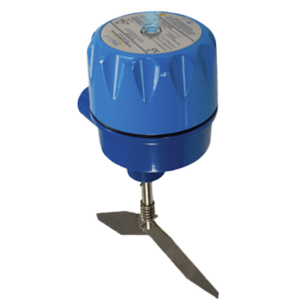In the realm of industrial processes and manufacturing, maintaining precise control and oversight is paramount. One crucial aspect of this control is the ability to accurately monitor levels of various substances within tanks, silos, and containers. This is where point level indicators step in. Point level indicators serve as indispensable tools, providing real-time information about material levels to ensure efficient operations and prevent costly disruptions. In this comprehensive guide, we’ll delve into the intricacies of point level indicators, exploring their functionality, types, applications, and significance in diverse industries.
What is a Point Level Indicator?
Point level indicators, also known as level switches or point level sensors, are devices used to detect the presence or absence of material at a specific point within a vessel or container. Unlike continuous level measurement systems, which monitor levels throughout the entire height of a container, point level indicators focus on predetermined points, typically the high or low levels of a substance. These devices offer a binary output, signaling when the material reaches or falls below a specified threshold.
Types of Point Level Indicators
Mechanical Float Switches: Among the oldest and most common types of point level indicators, mechanical float switches utilize buoyant elements that rise or fall with the level of the material being monitored. When the material reaches a predetermined level, the float actuates a switch, signaling the desired condition.
Electrode-Based Sensors: Electrode-based point level indicators employ conductive probes or electrodes placed at specific levels within the container. When the material comes into contact with these electrodes, it triggers a change in conductivity, activating the sensor to indicate the presence or absence of the substance.
Capacitance Sensors: Capacitance-based point level indicators function by detecting changes in capacitance caused by the presence or absence of material near the sensor. As the material level fluctuates, the capacitance between the sensor and the vessel wall varies, allowing the device to determine the level status.
Optical Sensors: Optical point level indicators utilize light beams to detect the presence or absence of material at a designated level. These sensors emit light pulses towards the material surface, and the reflected or refracted light is analyzed to determine the material’s position relative to the sensor. Optical sensors are particularly useful for detecting transparent or opaque substances.
Ultrasonic Sensors: Ultrasonic point level indicators employ high-frequency sound waves to measure distances to the material surface. By emitting ultrasonic pulses and analyzing the time it takes for the waves to return, these sensors accurately determine the material level within a container.
Vibrating Forks/Tuning Forks: Vibrating fork or tuning fork point level indicators utilize a vibrating element that oscillates at its natural frequency. When the material reaches the predetermined level, it dampens the vibration, causing a change in the device’s output signal.
Applications of Point Level Indicators
Point level indicators find application across various industries where precise level monitoring is critical for operational efficiency and safety. Some common applications include:
Liquid Level Detection: In liquid storage tanks or reservoirs, point level indicators are employed to prevent overfilling or run-dry conditions. They ensure optimal inventory management and prevent spills or equipment damage.
Solid Material Monitoring: Point level indicators are widely used in silos, hoppers, and bins to monitor the level of solid materials such as grains, powders, and aggregates. They help prevent material overflow, clogging, and equipment malfunction.
Bulk Solids Handling: Industries involved in handling bulk solids, such as cement, coal, and minerals, rely on point level indicators to maintain consistent material levels and prevent production delays or equipment failures.
Liquid Separation Processes: Point level indicators play a crucial role in liquid separation processes, such as those in wastewater treatment plants or chemical processing facilities, by ensuring optimal levels of various liquids in separators or clarifiers.
Safety and Alarm Systems: Point level indicators are integrated into safety and alarm systems to provide early warning signals in case of abnormal levels, leaks, or equipment malfunctions, helping to avert potential hazards or accidents.
Significance of Point Level Indicators
Process Optimization: By providing real-time information about material levels, point level indicators enable operators to optimize production processes, minimize downtime, and enhance overall efficiency.
Cost Savings: Accurate level monitoring prevents overfilling, underfilling, or material waste, resulting in significant cost savings by reducing product loss, equipment damage, and maintenance expenses.
Safety Assurance: Ensuring proper material levels is crucial for maintaining safe working environments and complying with regulatory standards. Point level indicators contribute to hazard prevention and risk mitigation by alerting operators to potential issues promptly.
Reliable Operation: With their robust design and reliable performance, point level indicators contribute to the uninterrupted operation of industrial processes, enhancing productivity and minimizing disruptions.
Conclusion
In conclusion, a point level indicator play a vital role in modern industrial operations by providing accurate and reliable monitoring of material levels within containers and vessels. With a diverse range of types and applications, these devices offer invaluable benefits, including process optimization, cost savings, safety assurance, and reliable operation. As industries continue to evolve and demand greater efficiency and safety, the significance of point level indicators in ensuring smooth and efficient operations cannot be overstated. Investing in high-quality point level indicators is essential for organizations seeking to maintain a competitive edge and achieve excellence in their operations.
No related posts.
